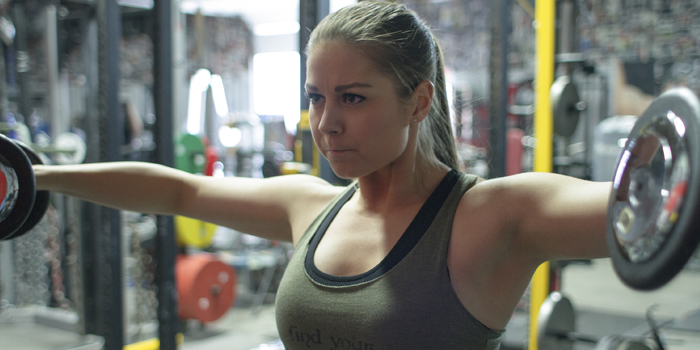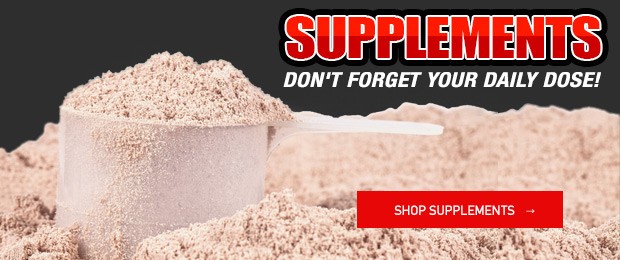
If you haven’t read the first installment of this series, go ahead and check it out here. Read at least the first paragraph to gain some context for this series.
Let’s get right into it! The topic for this article is creatine supplementation for women. Creatine has notoriously been removed or excluded from “for-women” pre-workout products. Within this article, I am going to discuss what creatine is and what purpose it serves. I am also going to talk about why I believe it is excluded from "for women" products. I’ve also made a video discussing this topic as well, if you would rather listen than read.
What is creatine and what does it do?
Creatine is simply a molecule naturally produced within the body that assists in the production of useable energy (ATP). It is predominately used as a fuel source within the creatine phosphate energy system. This energy system provides quick energy production for heavy one-rep max lifts, quick bursts of power, and all-out effort movements. While your body does produce it naturally, supplementing (or consuming, since it is also found in meat, egg, and fish products) with creatine has been proven to increase muscle strength and overall lean mass over time in both men and women.
What is the proper dosage of creatine?
Studies show the most effective dose is typically 2.5 to five grams per day. The majority of literature also tells us that loading or cycling creatine is not necessary or more effective than simply taking it daily or on training days. For smaller individuals, 2.5 grams is a good place to start, and for larger individuals five grams is sufficient. Again, we want to keep in mind that creatine is naturally produced in the body anyway, so really when we supplement with creatine, we are topping off our stores. Any excess creatine is excreted from our body.
RECENT: Beta-Alanine Supplementation: A Woman’s Perspective
However, when people load creatine (say 25 grams a day for two weeks), most feel bloated, hold a lot of water subcutaneously, and have GI issues. It was this biofeedback that steered folks away from the supplement altogether, and why it was removed or not included in a lot of “for women” products. However, 25 grams a day is way too much for most people, and again, research doesn’t show loading actually produces better strength or lean muscle gains. So really, a lot of companies based their decision to exclude creatine based on people taking the supplement incorrectly.
When should you take creatine?
You can actually take it whenever you want. It is popular before training as part of your pre-workout, but remember that your body produces it naturally and stores it. So, it really doesn’t matter when you take it; the benefits are consistent.
Is creatine safe?
Yes. Contrary to popular belief, creatine is not a steroid. Creatine has been researched thoroughly for years and is completely safe through supplementation. However, there are a few things to keep in mind if you choose to supplement with creatine.
- Make sure you drink plenty of water. This goes without saying, but if you are dehydrated and supplement with creatine, you may experience an upset stomach. As long as you drink an adequate amount of water throughout the day, you won’t run into any issues.
- Take creatine with a meal or after you have consumed some food. Similar to a multivitamin, for most folks, taking it on an empty stomach can cause nausea. It's the same idea with creatine. Make sure you have something in your stomach before consuming creatine, to avoid any digestion issues.
- There are many forms of creatine you can supplement with. I recommend creatine monohydrate, as it is the cheapest, most effective, and digests well. You can find this on its own, or stacked in “for everyone” pre-workouts.
Overall, the benefits and purpose of supplementing with creatine for training enhancement are inarguable. Therefore, removing it from “for women” products because of mal-dosing side effects mentioned above is a scapegoat at this point. In reality, an effective ingredient is simply being removed to cut down production costs of the product.
You can see that the majority of “for women” pre-workouts are just caffeine and vitamins when you really break down the label. In my opinion, this is such a slap in the face to women as consumers, and it needs to be addressed. So again, if you choose to use supplements, do yourself a favor and judge a product by the back and not the front. A fancy pink label doesn’t automatically translate to progress – so put your money in solid products where it belongs.
References
- Antonio, Jose. "Chapter 20: Sports Applications of Creatine." Essentials of Sports Nutrition and Supplements. Totowa, NJ: Humana, 2008. 417-430. Print.
- "The TRUTH on Creatine: Bodybuilding, Side Effects, Benefits, & When to Take." The TRUTH on Creatine: Bodybuilding, Side Effects, Benefits, & When to Take | Examine.com. Examine.com, n.d. Web. 06 Mar. 2017.











To be honest I am not sure if there is a way to "prime" your body to utilize creatine more effectively or increase it's effectiveness. I would just say that in this context - is probably why it is so popular and studied from a pre-workout standpoint. You are technically topping off your stores right before training in that case. It also pulls water into the muscle at a pretty opportune time as well. So even though your body produces it naturally (so you can technically take it whenever) - pre-workout is probably the most effective for lifters and their goals.
- Alycia
Nice! Never tried that before. Cool to know that is an option as well.
Thanks for commenting!
- Alycia
Thanks for reading.
You may ever so slightly, but it's not going to be like night and day difference. Especially if you've been taking creatine for awhile, and trained in a smart progressive fashion which allowed you to build muscle and get stronger, the strength you have gained in that time is not just going to disappear. The muscle and strength you have built up to this point will stay assuming you continue to train...you just may not be able to progress as efficiently moving forward. However - creatine is also found in animal protein....so unless you strictly eat a plant based diet...you are getting creatine in your diet regardless. So something to consider there too.